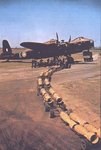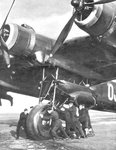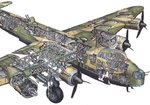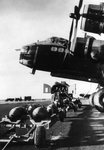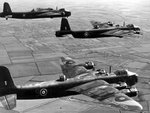twoeagles
Senior Airman
Many years ago when I worked for Garrett AiResearch in Phoenix, I had a boss
who had flown Hawker Hinds in Afghanistan, and then in WW2 flew the Short Stirling, an aircraft about which he waxed so sentimental as to be a little bit embarrassing, especially since I drew a blank on the Stirling.
Older and wiser myself now, I am embarrassed at my genuine lack of knowledge of all but the really famous Brit bombers - the Lancaster, Wellington, and to a lesser extent the Halifax. I am not even sure there
is a surviving Stirling anywhere. In the end, do you think the Stirling became
a kind of footnote to the air campaign, so overshadowed by the Lanc
that nobody even thought it worth preserving one? Yet I keep remembering
how old Bill Burley would spend hours regaling me with stories about his
lovely Stirling - wish I had written them down now...
who had flown Hawker Hinds in Afghanistan, and then in WW2 flew the Short Stirling, an aircraft about which he waxed so sentimental as to be a little bit embarrassing, especially since I drew a blank on the Stirling.
Older and wiser myself now, I am embarrassed at my genuine lack of knowledge of all but the really famous Brit bombers - the Lancaster, Wellington, and to a lesser extent the Halifax. I am not even sure there
is a surviving Stirling anywhere. In the end, do you think the Stirling became
a kind of footnote to the air campaign, so overshadowed by the Lanc
that nobody even thought it worth preserving one? Yet I keep remembering
how old Bill Burley would spend hours regaling me with stories about his
lovely Stirling - wish I had written them down now...

